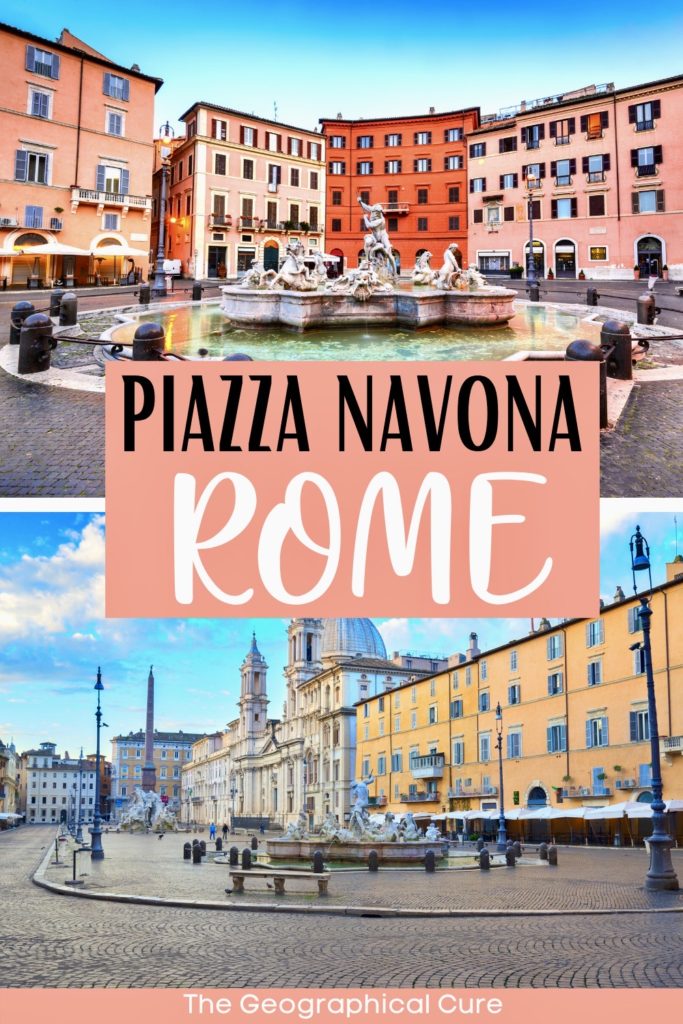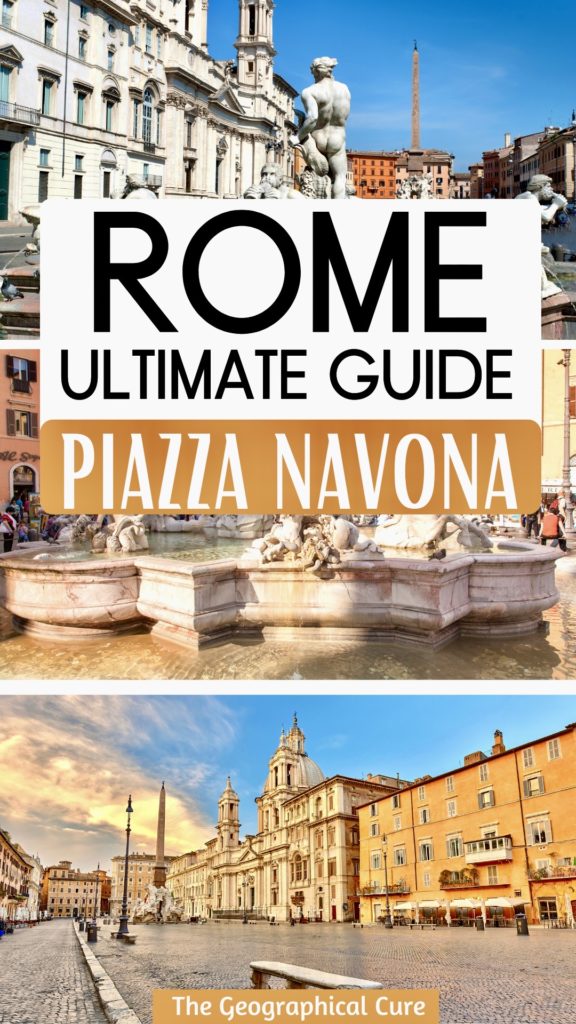Planning to check out the beautiful Piazza Navona in Rome?
For nearly 400 years, the elegant Renaissance square has been an artistic jewel at the heart of Rome’s centro storico. It’s sometimes called the Square of Fountains and is the very symbol of Rome.
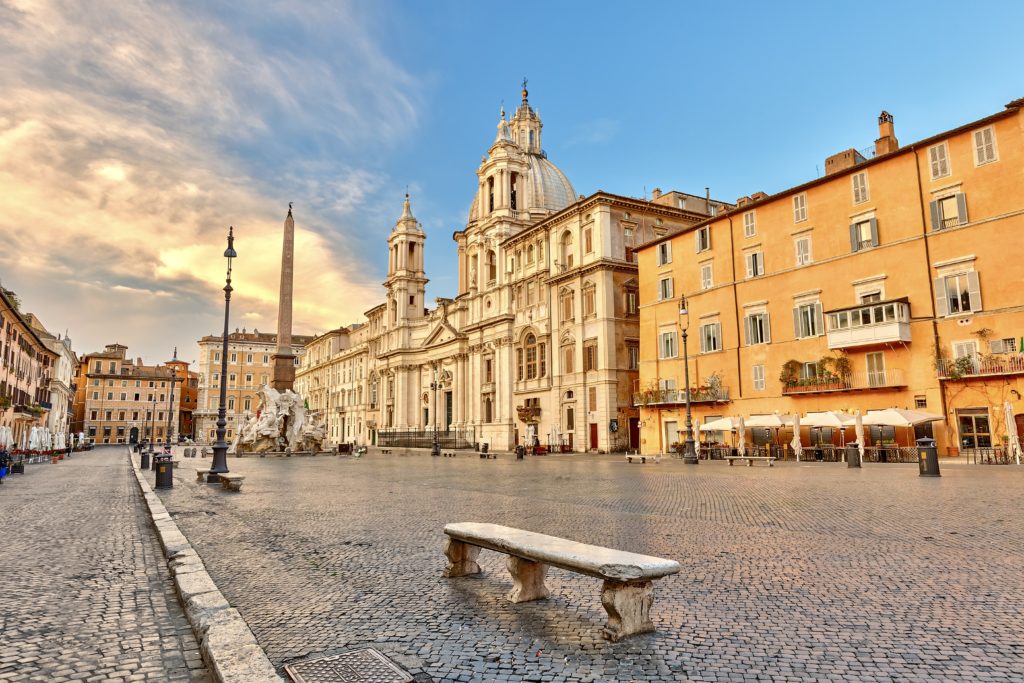
Piazza Navona is a long rectangle flanked by sublime palaces, statues, and fountains designed by the greatest artistic geniuses of the day. It’s a place where beauty breaks in everywhere.
The square is completely pedestrianized. But it’s busy from morning until night. It’s always filled with tourists, artists, and street vendors.
Mini History Of Piazza Navona
No guide to Piazza Navona would be complete without a look at its interesting history.
It all began with Emperor Domitian. He was an unlucky emperor, who came to power when his brother Titus died without an heir.
Like his father Vespasian before him, Domitian needed legitimacy and set out to become the “New Augustus.”
In short order, he constructed the Arch of Titus in the Roman Forum, the very heart of Roman public life. In 86 A.D., he built a new stadium for the amusement of the Roman people.
He gained a tentative foothold on power. But, unlike Augustus, Domitian was an autocrat who was impatient with those that didn’t fall in line. He exiled or murdered those who stood in his way, making him unpopular.
READ: History of the Roman Emperors
A prophecy foretold that Domitian would die at noon. This made him paranoid about that time of today.
But, eventually, with the help of a traitorous servant, a conspiracy of assassins struck. Domitian was stabbed to death at age 45 in 89 A.D. His memory was damned by the Senate and his statues destroyed.
Today, Domitian is a relative unknown emperor. But his shadow looms large in Rome in the form of the Piazza Navona.
The iconic square was the site of the Stadium of Domitian. Domitian used it as a racetrack for chariot races and arena for athletic contests like foot races and boxing matches. The buildings surrounding the piazza were once stadiums with 20,000 screaming fans.
The games were known as agones and the square was then called Circo Agonalis. This name changed over time to in avone to navone to today’s name navona.
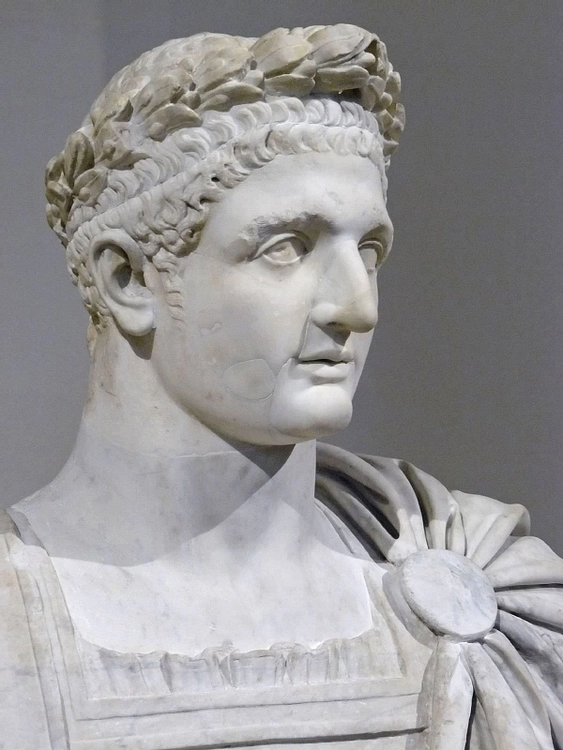
Eventually, after the fall of Rome, all that was left of Domitian’s stadium was the outline of the oval track. The piazza you see today owes its shape to the forgotten stadium.
The Senate may have damned his memory, but Domitian is still there. Indeed, the ruins of his stadium are now a UNESCO World Heritage site.
Beginning in 1652, Piazza Navona was turned into a lake in the summer. The drains of the fountains were closed and the square became flooded with water.
Aristocrats would decorate their coaches like traditional gondolas. Sometimes there were mock naval battles.
In the 17th century Pope Innocent X transformed the piazza with the help of Bernini and Borromini. He built stunning Baroque buildings, including his family palace Palazzo Pamphilj.
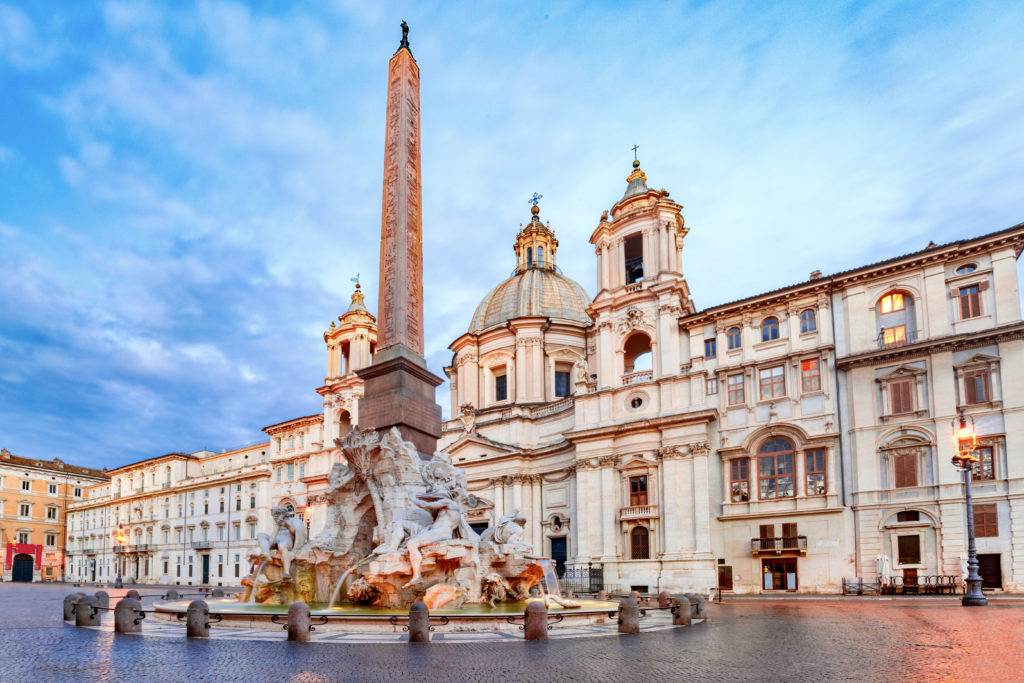
Guide To The Monuments Of Piazza Navona
Here’s everything you should see in the Piazza Navona:
1. Church of Sant’Agnese
The Church of Sant’Agnese is a beautiful monument in Piazza Navona. It was designed and built by the architect Borromini for the Pamphilj family. He was an Italian architect who helped launch Roman Baroque architecture.
The Pamphilj intended to use the church as their private chapel. They simply cut an opening in one of the apartment walls of their palace next door, so family members could attend services without going outdoors.
Borromini’s works combine classicism with passion. He used concave and convex forms to animate his buildings and eschewed over-decoration.
Sant’Agnese was one of his masterpieces. Everyone goes to Piazza Navona and admires the striking concave facade. But most people don’t step inside the church. Do it, it’s free!
The church was commissioned by Pope Innocent X. It stands on the site of a much older church dedicated to Saint Agnes. According to popular belief, she was martyred on this very spot.
The most distinctive element is the concave facade. It’s an ingenious design that revolutionized Baroque architecture. The facade is in a tight space, but it can be seen from anywhere in Piazza Navona.
The facade is made of white travertine limestone and has three portals. Pink and white marble cover the walls inside. The bright and simple interior is filled with Baroque statues. Beautiful frescos decorate the dome.
You can also see some of the remains of the Stadium of Domitian in the cellars of the church, including brick and concrete walls.
2. Fountains of Piazza Navona
Piazza Navona is home to perhaps the world’s most famous trio of fountains.
Fountain of Four Rivers
The piazza is dominated by one of Rome’s most iconic landmarks, the beautiful Fountain of Four Rivers, Fontana dei Quattro Fiumi. It was designed in 1651 by the famous Gian Lorenzo Bernini, the greatest sculptor of the Baroque.
But Bernini almost didn’t get the commission. The artist had many rivals.
Some rivals had the ear of the new pope, Innocent X, who succeeded Urban VIII. When Innocent X commissioned designs for the fountain from leading architects of Rome, he excluded Bernini.
One of Bernini’s allies, Nicole Ludovisi, persuaded Bernini to prepare a model of the fountain anyway. Ludovisi then displayed it in the Palazzo Doria Pamphilj, which the pope passed through every day.
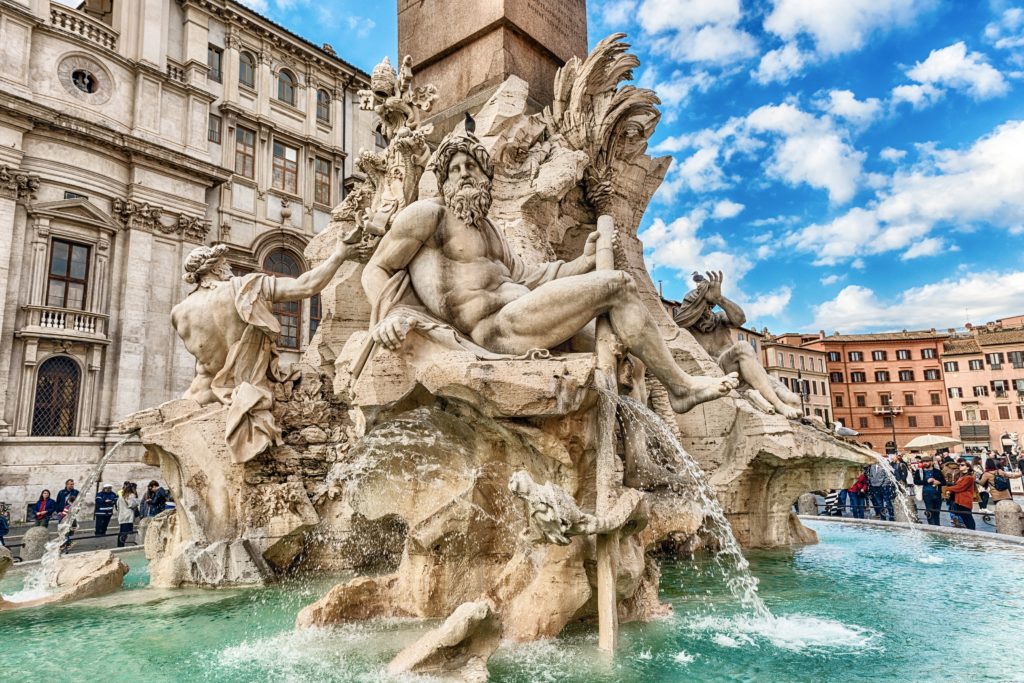
As anticipated, when the pope saw the model, he was in ecstasy. He observed: “He who desires not to use Bernini’s designs, must take care not to see them.”
So Bernini won the contest for the fountain. In it, you see four muscular Michelangelo-esque statues representing the gods.
They represent the four great rivers of the world: the Danube, the Ganges, the Rio del Plato, and the Nile.
All have flowing beards and hair. They seem to be caught in moments of surprise or motion.
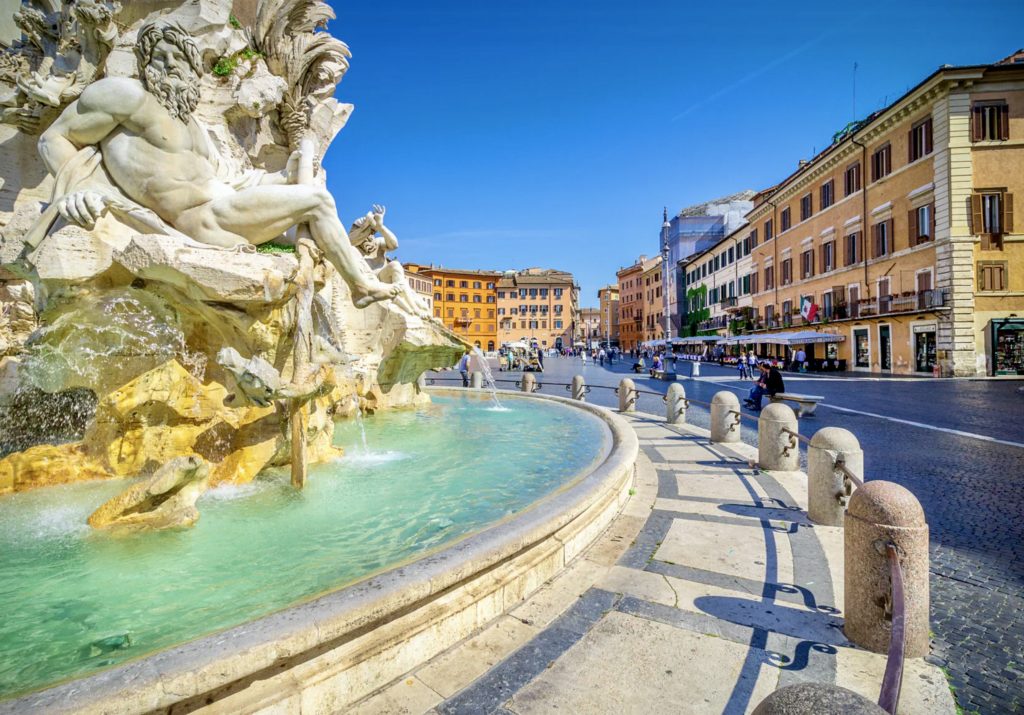
The fountain is festooned with palm trees and animals. A dove representing the Doria Pamphilj family sits at the top. Rising from the fountain is an Egyptian obelisk in honor of Domitian.
The fountain faces the Borromini-designed Sant’Agnese. Bernini lost the commission for the church to Borromini. Legend holds that Bernini expressed his disdain for Borromini’s project through his fountain.
The River Nile appears to hide his face from the sight of the church. The Rio del Plata god has his hands raised, as if to protect himself in case Borromini’s church falls down.
It makes for a good story, but it’s just apocryphal. The fountain was completed before the church.
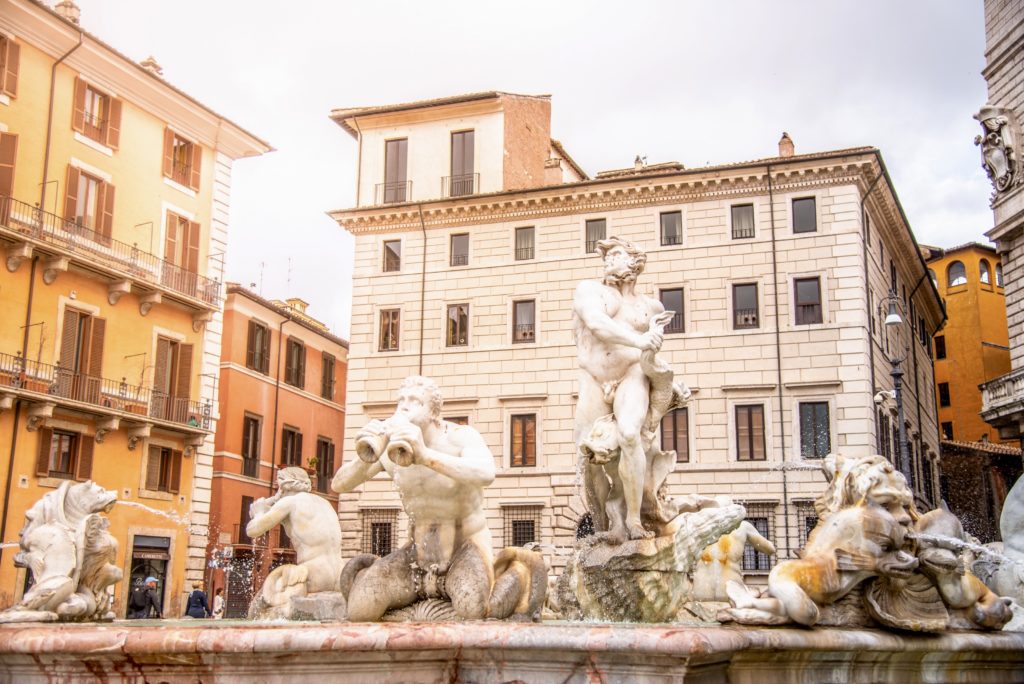
Fountain of the Moor
The Fountain of the Moor is a monument located in the southern end of Piazza Navona near Palazzo Braschi.
The fountain was designed by Giacomo della Porta in 1576 and thus pre-dates the Fountain of Four Rivers.
Bernini later refurbished it and designed the central figure. Legend holds that Bernini initially wanted a snail, but the pope nixed the idea.
So Bernini created a statue of a man with facial features reminiscent of the “talking” statue of Pasquino, which once graced the Stadium of Domitian.
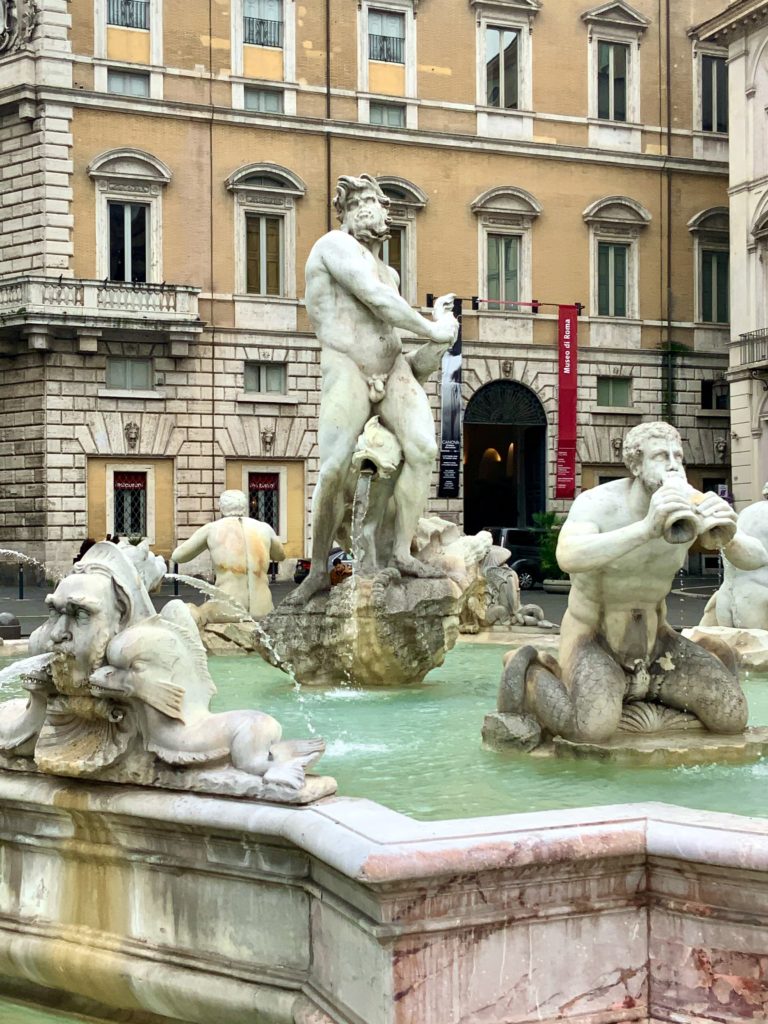
Pasquino was a statue representing discontent over papal actions. So, perhaps Bernini took a little revenge against the pope himself.
The fountain sits on a basin of rose colored marble. A Moor, or African, stands in a conch shell wrestling a dolphin. Around him are four tritons. They blow water out of shells.
What you see are replica sculptures. The originals were moved to Villa Borghese in 1909.
Which is a good thing because, in 2011, one of the sculptures was vandalized. The thief was caught and the piece restored.
The Fountain Of Neptune
The monumental Fountain of Neptune is at the northern end of Piazza Navona. It was initially conceived by the architect Giacomo della Porta in 1574.
But it took 300 years for the fountain to come to fruition. Gregorio Zappala and Antonio della Bitta carved the sculptures you see today, including Neptune, in the late 19th century.
The fountain was added in 1878 to make that square more symmetrical with the Fountain of the Moor in the south.
The fountain shows the god of the sea slaying a giant octopus. Sea nymphs, cupids, and mermaids play with dolphins.
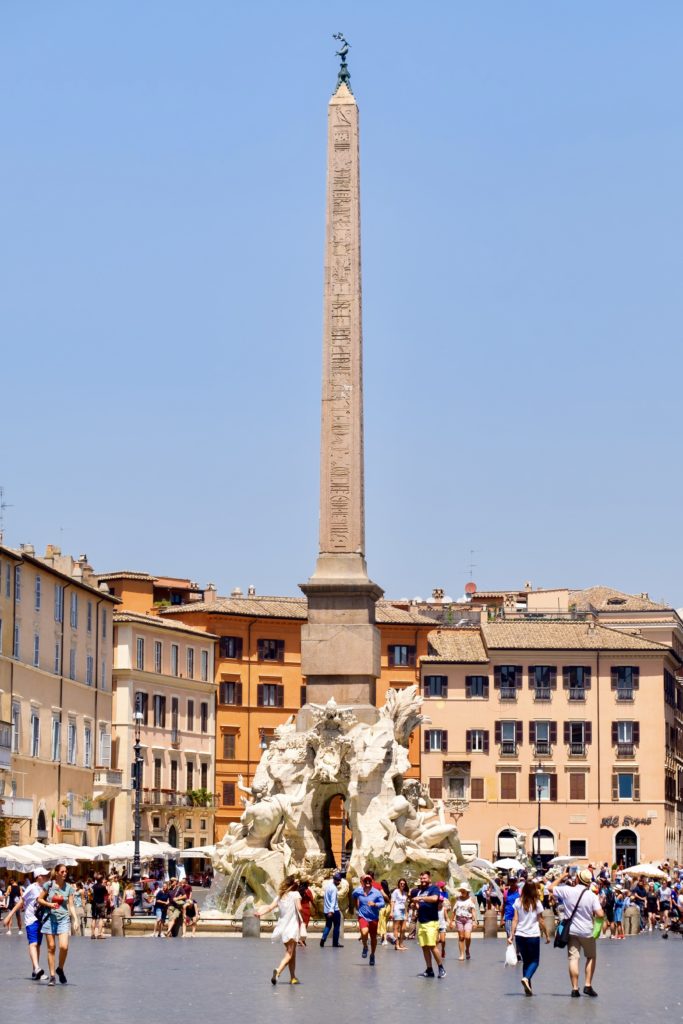
3. Obelisk of Piazza Navona
Obelisk Agonale sits on the Fountain of Four Rivers. Rome was a little obelisk crazy in its heyday.
In fact, Rome has more obelisks than the country of Egypt. 8 are Roman and 5 are Egyptian. The largest is the ancient Egyptian Lateran Obelisk in front of the Basilica of St. John Lateran.
Rome liked the symbolism of the obelisks. Egyptian society saw its rulers as divine, and Roman rulers wanted the same treatment.
The Piazza Navona obelisk, however, is not from Egypt. It’s a Roman copy made during Domitian’s reign. After his murder, it was buried and not excavated until 1649.
Like all obelisks, it’s a tall four sided tapering monument that ends at the top with a pyramid. The hieroglyphs on the obelisk contain the names of Vespasian and his sons Titus and Domitian.
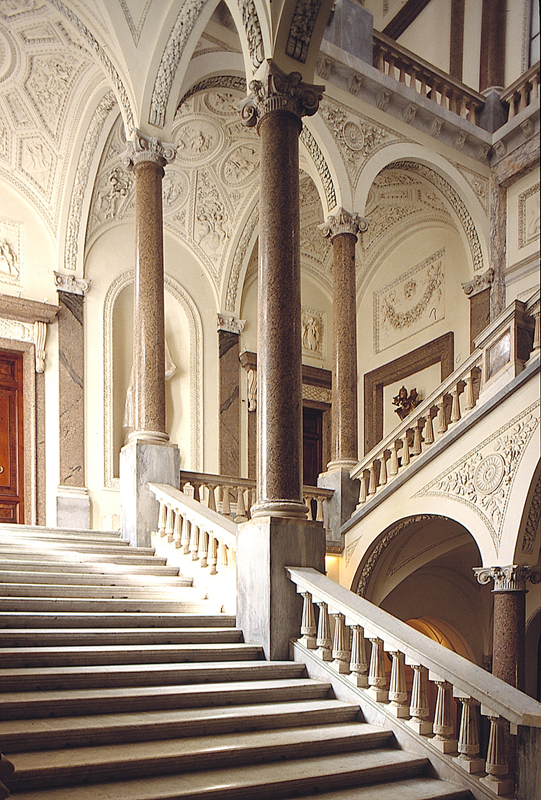
4. Palazzo Braschi | Museum Of Rome
The Museum of Rome is housed in the 18th century Palazzo Braschi, a beautiful Neo-Classical building. It’s a civic museum devoted to the history, art, and traditions of Rome from the middle ages through the 20th century.
The palazzo was by Luigi Braschi Onesti. He was the nephew of Pope Pius VI, who poured coffers of money into the place gained through selling privileges.
This is where you go to get a taste of local Rome and learn about its aristocratic families. There’s a monumental staircase, designed by the architect Giuseppe Valadier.
The museum houses a wide variety of artifacts linked to the social history of Rome, from the Middle Ages to the first half of the 20th century. You’ll find furniture, paintings, photographs, and ancient Roman pieces.
Click here to book a ticket to the Museum of Rome. The museum is also included in the Roma Pass.
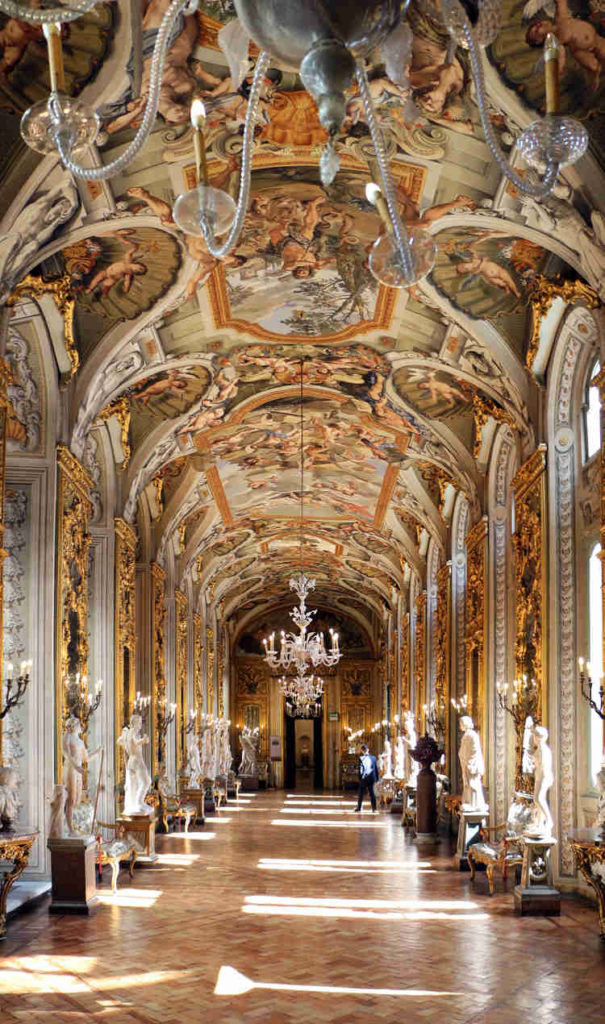
5. Palazzo Doria Pamphilj
The Palazzo Doria Pamphilj is a stunning monument on Piazza Navona, built by Girolamo Rainaldi. It’s now the home of the Brazilian Embassy.
Like so many of the monuments of the Piazza Navona, it has an interesting backstory. The socialite Olimpia Maidalchini married Pamphilio Pamphilj, the brother of a cardinal that would go on to become Pope Innocent X.
The rumor is that Olimpia and the pope were lovers. She “persuaded” him to build her a grand palace on Piazza Navona. And, although the pope preferred Borromini to Bernini, she persuaded him to give Bernini the commissions for the square’s fountains.
The Palazzo also houses one of Rome’s best museums, the Galleria Pamphilj. The museum provides a near overdose art high.
The museum holds a princely collection of 17th century works, one of the most impressive private collections in Europe. Still, the museum is one of Rome’s hidden gems.
It’s housed in a lavish Roman-Rococo palace. Every inch of the walls and ceilings are decorated with beautiful frescos, tapestries, and glittering chandeliers.
The art collection was meticulously assembled and is still owned by the powerful Pamphilj family.
The museum boasts over 700 works spanning the 15th to 18th centuries. There are rare master works by Bernini, Caravaggio, Velazquez, Titian, Carracci, and Bruegel.
The Doria Pamphilj’s most famous painting is Velazquez’s Portrait of Pope Innocent X. He’s portrayed as a stern intimidating figure. The painting is housed in its own room behind glass.
The portrait was so individualized that the pope remarked “It is too true!” Nearby is Bernini’s marble bust of the same pope.
Of special note are two rare Caravaggio paintings, the Penitent Magdelene and the beautiful The Rest on the Flight into Egypt. They’re on display in the splendid Aldobrandini Room.
A Doria Pamphilj prince narrates the audio guide with amusing historical detail and insight. Click here to book an entrance ticket. You can also book a guided tour of the museum.

6. Underground Museum
Did you know there’s a UNESCO site in Piazza Navona? Domitian had his revenge from the grave. The UNESCO site is the ruins of his very own sporting stadium.
It’s at the north end of Piazza Navona in the underground museum, Stadio di Domiziano. 16 feet below the street level, it houses the ruins of Domitian’s stadium, which is thought to be the only masonry stadium built in ancient Rome.
The museum was first opened to the public in 2014. You can only visit for 40 minutes for € 8.50.
Through audio guides and 3D videos, you’ll learn about the history of Domitian’s Stadium, Greco-Roman sports, and Piazza Navona.
Click here to book a ticket to the museum. You can also book a ticket and tour for this unique underground experience.
You can sneak a peak at the ruins through a window at the northern end of Piazza Navona on Piazza di Tor Sanguigna. You’ll see the arches are preserved in near perfect condition.
Guided Tours of Piazza Navona
You can book a 3.5 hour guided tour of central Rome that includes Piazza Navona.
This area of Rome is also incredibly special by night. You can book a 2 hour nighttime guided walking tour of Piazza Navona and the Trevi Fountain.
Tips For Visiting Piazza Navona
Piazza Navona is northwest of the Roma Forum. It’s about a 30 minute walk from the Colosseum.
The closest metro is the Barberini metro station. But it’s a 20 minute walk from there.
So you’ll have to walk to the piazza to visit properly.
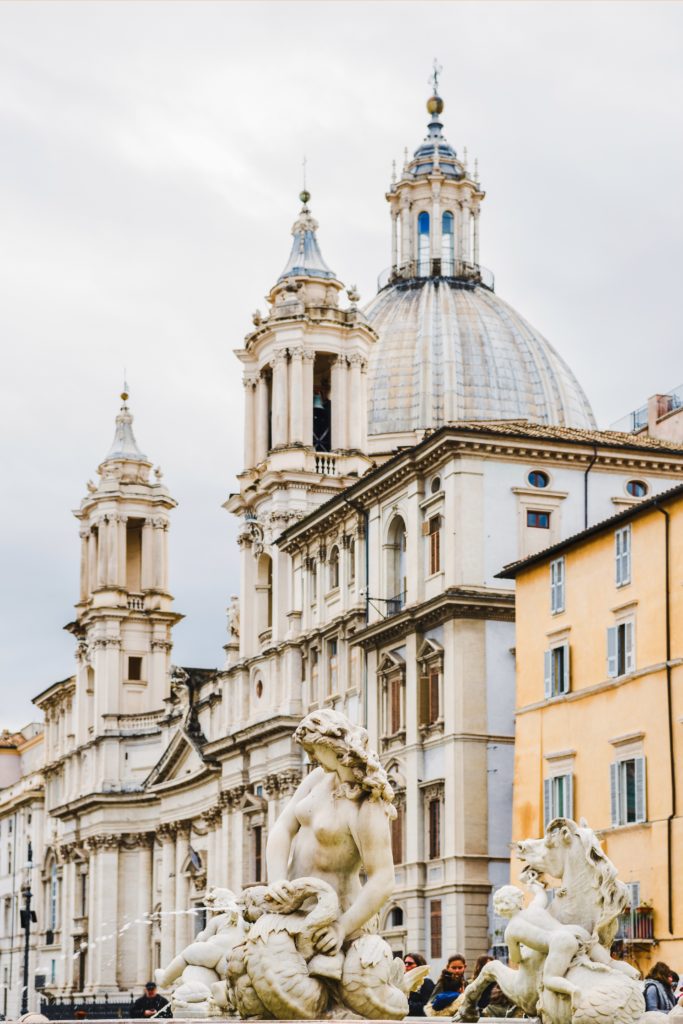
The piazza is a public space, open at all hours. You can easily spend several hours there if you want to see all the monuments of Piazza Navona.
There are strict rules prohibiting littering or bathing in the fountains of Piazza Navona. You can, however, throw in coins.
The piazza is not a good place to sit down for a meal. The cafes will be overpriced and the food somewhat mediocre. While the setting is beautiful, you’ll have better luck wandering further afield.
But if you need a coffee or glass of wine, head to Etabli, right off the piazza. If you need a gelato (and who doesn’t?), head to La Gelateria Frigidarium.
What To See Near Piazza Navona
There are plenty of amazing things to see just steps from Piazza Navona.
1. Pantheon
The best thing to see near Piazza Navona is the iconic Pantheon.
Without a doubt, the Pantheon is the most famous and best preserved monument from ancient Rome.
It’s the only piece of Imperial architecture left intact. And it’s a breathtaking work of ancient Roman architecture and engineering.
The Pantheon’s most emblematic feature is its perfect unsupported spherical dome. At the time, it was a major architectural breakthrough. The dome became the model for Michelangelo’s dome for St. Peter’s Basilica and for Brunelleschi’s dome for Florence Cathedral.
Here’s my complete guide to visiting the Pantheon. You can also book a 1 hour guided tour.
3. Santa Maria della Pace
The Church of Santa Maria della Pace is also just off the piazza. It’s a 15th century church given the usual Baroque makeover by Pietro da Cortona in the 1660s.
Inside, there’s art that you wouldn’t expect for such a small and relatively unknown church. That includes paintings by Renaissance masters Raphael, Baldassare Peruzzi, and Orazio Gentileschi. The crowning glory is Raphael’s Four Sibyls above the Chigi Chapel.
The ornate high altar was also designed by Baroque architect Carlo Maderno, a man sometimes described as the founding father of Baroque architecture.
The Bramante Cloister adjoins the church. Completed between 1501 and 1504, the magnificent cloister has two level of arched arcades. Bramante designed this structure following his move from Milan.
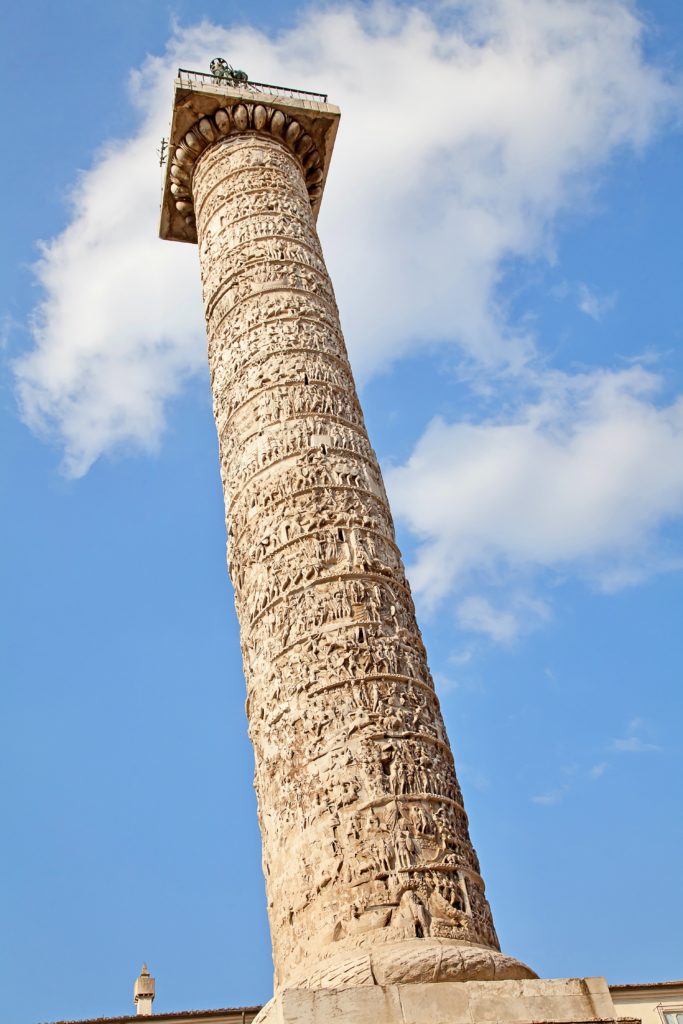
4. Trajan’s Column
Trajan’s Column is also only 5 minutes away from Piazza Navona. The column was part of Trajan’s Forum.
It’s probably the best preserved victory column in Rome, though it’s similar to the column for Marcus Aurelius in Piazza Colonna. Built in 113 AD, the column was a tour de force of Roman propaganda art.
The column celebrated Trajan’s defeat over the Dacians. It depicts the campaigns he fought against them, the fortifications that were built, the Dacian themselves, and their weaponry.
I hope you’ve enjoyed my guide to the history and monuments of Piazza Navona. You may enjoy these other Rome travel guides and resources:
- 8 ways to spend 1 day in Rome
- 3 day itinerary for Rome
- 5 day itinerary for Rome
- Hidden gems in Rome
- Best museums in Rome
- Archaeological sites in Rome
- Guide to the Borghese Gallery
- Guide to Palatine Hill
- Guide to the Roman Forum
- Guide to the Colosseum
- Walking tour of central Rome
If you need a guide to Piazza Navona, pin it for later.

